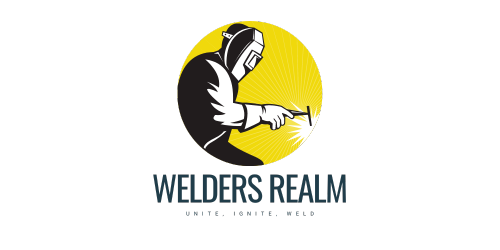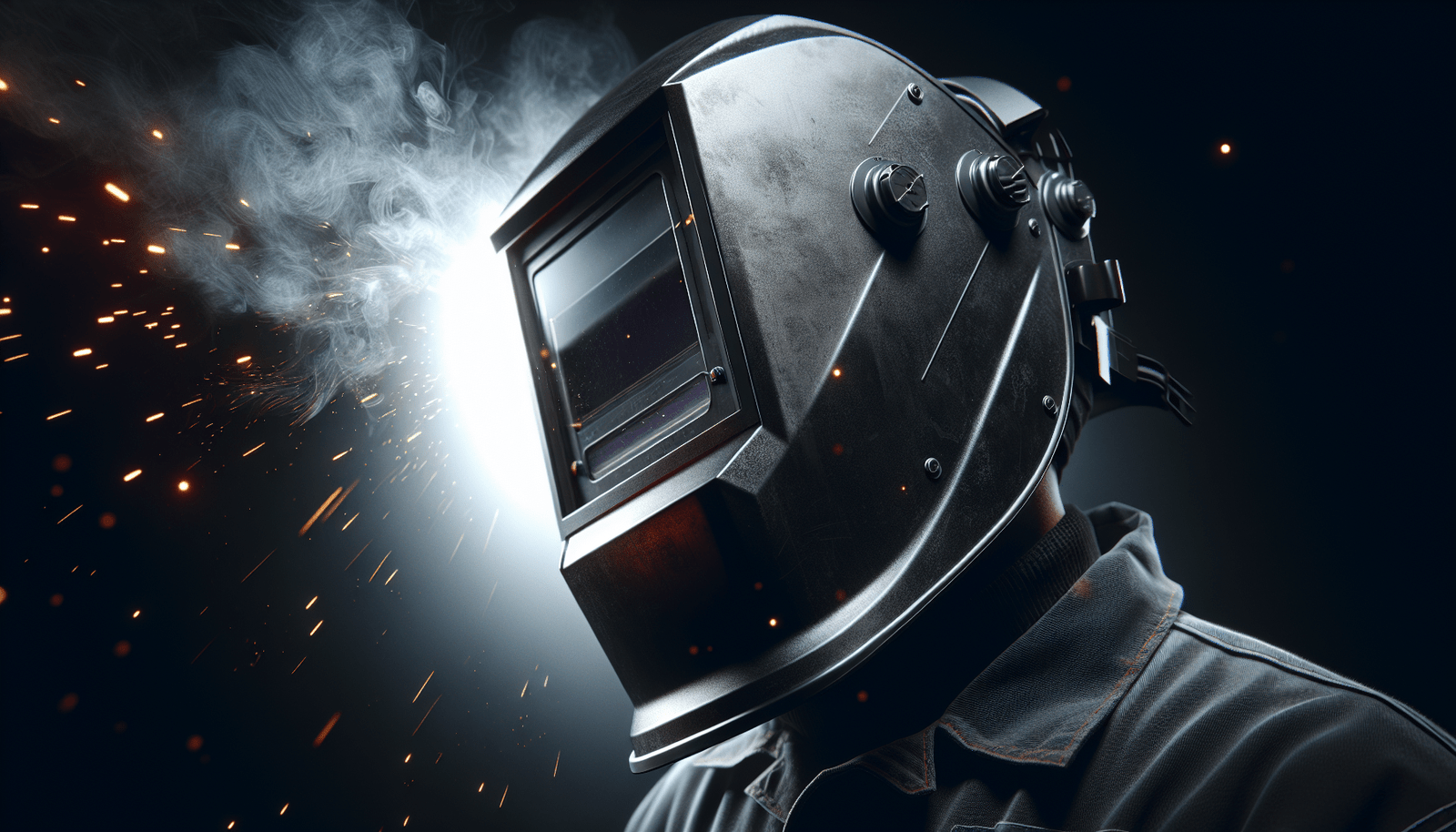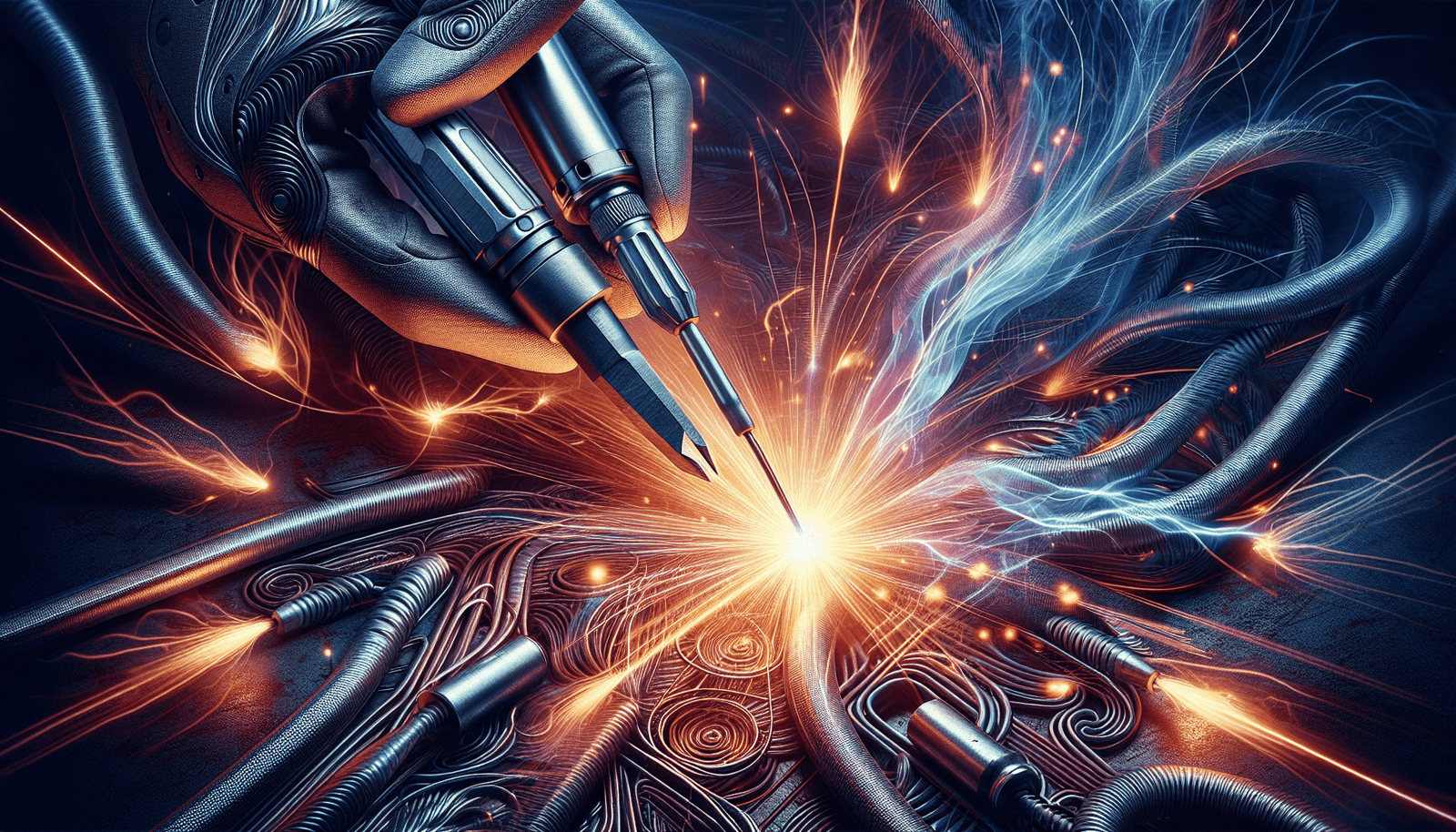Curious about welding inspection? Look no further! In this article, we’ll tackle all your burning questions about this vital process. Whether you’re a seasoned welding guru or simply on the hunt for welding product reviews, we’ve got you covered. And don’t worry, we promise to keep things simple and approachable, steering clear of confusing jargon whenever possible. So, get ready to dive into the world of welding inspection and discover the ins and outs of this essential aspect of welding. And hey, after you’ve learned all there is to know, we’ll even throw in a little encouragement to shop online. Let’s get started!
Understanding Welding Inspection
Welding inspection is a crucial process in the field of welding that involves evaluating the quality and integrity of welded components. It ensures that welding procedures and practices are in compliance with industry standards and specific project requirements. By conducting thorough inspections, weld defects can be identified and rectified, thus ensuring the safety and reliability of the welded structure.
Definition of Welding Inspection
Welding inspection can be defined as the systematic examination of welded joints, equipment, and materials to verify that they meet prescribed standards and specifications. It involves visual inspection, non-destructive testing (NDT), and destructive testing to identify any imperfections or abnormalities in the welds.
Purpose of Welding Inspection
The main purpose of welding inspection is to ensure the quality of welded structures and components. By inspecting the welds, it helps to prevent defects such as porosity, cracks, inclusions, and incomplete fusion, which can compromise the structural integrity of the weldment. Welding inspection also helps in maintaining code compliance, meeting safety regulations, and ensuring the longevity of the welded structure.
Role of a Welding Inspector
A welding inspector plays a vital role in the welding inspection process. Their main responsibility is to monitor and assess the quality of welds and welding procedures. They ensure that all welding operations are carried out in accordance with the relevant specifications, codes, and standards. A welding inspector is responsible for conducting inspections, documenting results, and providing recommendations to rectify any identified issues. They play a crucial role in ensuring the overall quality and safety of the welding process.
Types of Welding Inspections
Visual Inspection
Visual inspection is the most basic and commonly used method in welding inspection. It involves a thorough visual examination of the welds and surrounding areas to identify any visible defects such as surface cracks, porosity, undercut, and insufficient fusion. A trained welding inspector uses their expertise and visual acuity to evaluate the quality and workmanship of the welds.
Non-destructive Testing (NDT)
Non-destructive testing (NDT) is a technique used to examine the integrity of the welds without causing any damage to the welded structure. It includes methods such as ultrasonic testing, radiographic testing, magnetic particle testing, and liquid penetrant testing. NDT provides valuable information about the internal structure and quality of welds, allowing inspectors to detect any hidden defects or abnormalities.
Destructive Testing
Destructive testing involves physically testing the welds by subjecting them to extreme conditions to determine their strength, durability, and other mechanical properties. It typically includes tests such as tension testing, bend testing, impact testing, and hardness testing. Destructive testing is often performed on sample welds to assess the overall quality and suitability of the welding procedure.
Responsibilities of a Welding Inspector
Inspection Planning
A welding inspector is responsible for planning the inspection process, which includes identifying the critical areas to be inspected, determining the required inspection methods, and developing an inspection schedule. They collaborate with other stakeholders to ensure that the inspection plan aligns with the project requirements and industry standards.
Supervising Welding Operations
During welding operations, a welding inspector plays a crucial role in overseeing and monitoring the welding process. They ensure that the correct welding procedures are followed, proper welding techniques are employed, and necessary safety precautions are in place. They conduct periodic inspections to ensure that the weld quality is maintained throughout the welding process.
Quality Control
One of the primary responsibilities of a welding inspector is to enforce quality control measures throughout the welding project. They verify the compliance of welding procedures, materials, and equipment with the specified standards. They identify and address any non-conformities, ensuring that corrective actions are taken to rectify any deviations from the required quality standards.
Documenting Inspection Results
A welding inspector is responsible for documenting all inspection activities and results. They maintain detailed records of inspections, including photographs, test reports, and other relevant documentation. This documentation serves as evidence of compliance and provides a historical record of the welding process. It helps in evaluating the performance and quality of welds and ensures traceability in case of any future issues or disputes.
Prerequisite: Knowledge of Welding Processes
To be an effective welding inspector, it is essential to have in-depth knowledge of various welding processes. Here are some of the most common welding processes that a welding inspector should be familiar with:
Shielded Metal Arc Welding (SMAW)
Shielded Metal Arc Welding, also known as stick welding, is a manual arc welding process that uses a consumable electrode coated with a flux. It is commonly used for structural steel fabrication, pipeline welding, and repair work. A welding inspector should have a thorough understanding of this process, including electrode selection, welding parameters, and quality requirements.
Gas Tungsten Arc Welding (GTAW) or TIG
Gas Tungsten Arc Welding, also known as Tungsten Inert Gas (TIG) welding, utilizes a non-consumable tungsten electrode and an inert shielding gas to produce high-quality welds. It is widely used in industries where precision and aesthetics are crucial, such as aerospace, automotive, and food processing. A welding inspector should be knowledgeable about the TIG welding process and its associated requirements.
Gas Metal Arc Welding (GMAW) or MIG
Gas Metal Arc Welding, also known as Metal Inert Gas (MIG) welding, is a semi-automatic welding process that uses a continuous wire electrode and a shielding gas to protect the weld pool. It is commonly used in industries such as fabrication, automotive, and construction. A welding inspector should be familiar with the various MIG welding techniques, equipment, and quality standards.
Submerged Arc Welding (SAW)
Submerged Arc Welding is an automatic welding process that utilizes a granular flux and a continuous wire electrode. The arc is completely submerged under the flux layer, providing excellent protection and high deposition rates. It is often used in heavy fabrication, pressure vessel manufacturing, and welding of large structures. A welding inspector should understand the complexities of the submerged arc welding process and ensure that the welding operation complies with the specified standards.
Flux-Cored Arc Welding (FCAW)
Flux-Cored Arc Welding is a semi-automatic or automatic welding process that uses a tubular wire filled with flux to protect the weld pool. It combines the benefits of both MIG and SMAW processes, offering high deposition rates and excellent penetration. It is commonly used in construction, shipbuilding, and offshore industries. A welding inspector should be knowledgeable about the specific requirements and challenges associated with FCAW.
Essential Equipment For Welding Inspection
To carry out effective welding inspections, a welding inspector requires certain essential equipment. Here are some of the primary tools and equipment used in welding inspection:
Rules and Tapes
Measuring tools such as rules and tapes are essential for checking the dimensions and alignment of welds. They help ensure that the welded components meet the specified tolerances and fitment requirements.
Magnifying Glass
A magnifying glass is a valuable tool for inspecting welds, especially for detecting small imperfections and discontinuities. It helps in identifying surface cracks, porosity, and other defects that may not be readily visible to the naked eye.
Welding Gauge
Welding gauges, also known as inspection gauges, are used to measure and evaluate the quality of welds. They help ensure that the weld size, weld profile, and other critical parameters are within the specified limits.
Ultrasonic Testing Equipment
Ultrasonic testing equipment is used for non-destructive testing to evaluate the internal structure and integrity of welds. It utilizes high-frequency sound waves to detect any defects or anomalies that may be present within the welded material.
Welding Inspector Certifications
To become a certified welding inspector, several recognized certifications are available. These certifications validate the knowledge, skills, and experience of welding inspectors. Here are some of the well-known welding inspector certifications:
American Welding Society (AWS) Certification
The American Welding Society offers several certification programs for welding inspectors, including Certified Welding Inspector (CWI), Senior Certified Welding Inspector (SCWI), and Certified Welding Educator (CWE). These certifications are widely recognized in the welding industry and demonstrate a high level of expertise in welding inspection.
CSWIP Welding Inspection Certification
The Certification Scheme for Welding and Inspection Personnel (CSWIP) is administered by the British Institute of Non-Destructive Testing (BINDT). It offers certification for welding inspectors, including CSWIP Welding Inspector, Senior Welding Inspector, and Welding Inspector Level 3. These certifications are globally recognized and highly regarded in the field of welding inspection.
API 570 Piping Inspection Certification
The American Petroleum Institute (API) offers the API 570 certification for welding inspectors specializing in piping inspection. This certification demonstrates the inspector’s competency in inspecting and evaluating the integrity of piping systems in the oil and gas industry.
Weld Defects and Their Identification
During welding operations, various defects can occur, compromising the quality and strength of the welds. A welding inspector plays a crucial role in identifying and classifying these defects. Here are some common weld defects and their identification methods:
Porosity
Porosity is the formation of voids or gas pockets within the weld metal caused by trapped gas during the solidification process. It weakens the weld and reduces its load-bearing capacity. Porosity can be identified through visual inspection, where gas pores appear as small holes or cavities on the surface of the weld.
Cracks
Cracks are discontinuities in the weld metal that can significantly affect the structural integrity of the weldment. They may be caused by excessive heat input, improper welding techniques, or poor material preparation. Cracks can be detected through visual inspection or more advanced non-destructive testing methods such as radiographic testing or ultrasonic testing.
Inclusions
Inclusions are foreign substances or particles that become trapped within the weld metal during the welding process. They can include slag, oxides, or other contaminants. Inclusions can weaken the weld and contribute to corrosion or failure. Visual inspection and NDT methods such as magnetic particle testing or liquid penetrant testing are commonly used to detect inclusions.
Distortion
Distortion refers to the deformation or warping of the welded structure caused by the heat generated during welding. It can result in misalignment, dimensional inaccuracies, or stress concentration points, which may lead to premature failure. Distortion can be visually identified by assessing the overall shape and alignment of the welded structure.
Undercut
Undercut is a groove or depression created along the weld toe or weld root. It is often caused by excessive heat input or improper welding techniques, leading to a reduction in cross-sectional area and weakening of the weld. Undercut can be detected through visual inspection by examining the profile of the weld bead.
Incomplete Fusion
Incomplete fusion occurs when the molten weld metal fails to fuse completely with the base metal or the previously deposited weld metal. It results in an insufficient bond and weakens the integrity of the weld. Visual inspection and NDT methods such as ultrasonic testing or radiographic testing can be used to identify incomplete fusion.
Common FAQs
How to become a Certified Welding Inspector?
To become a Certified Welding Inspector (CWI), you need to meet certain requirements set by the American Welding Society (AWS). These requirements typically include a combination of education, work experience, and passing the CWI examination. It is recommended to pursue relevant welding courses, gain practical experience, and then apply for the CWI examination. Once you pass the exam and satisfy other requirements, you can become a Certified Welding Inspector.
What is the importance of Welding Inspection?
Welding inspection is of utmost importance in ensuring the quality, safety, and performance of welded structures. It helps identify and rectify weld defects that could compromise the structural integrity and reliability of welded components. Welding inspection also ensures compliance with industry standards, codes, and regulations, reducing the risk of failures, accidents, and costly repairs. It ultimately contributes to the longevity and overall quality of the welded structures.
What types of defects can a Welding Inspection detect?
A welding inspection can detect various defects in welds, including porosity, cracks, inclusions, distortion, undercut, and incomplete fusion. These defects have the potential to weaken the welds and compromise their load-bearing capacity. By conducting thorough inspections, welding inspectors can identify these defects and recommend appropriate corrective measures to ensure the quality and integrity of the welds.
What tools are necessary for a Welding Inspection?
Several tools are essential for conducting effective welding inspections. These include rules and tapes for measurements, a magnifying glass for detailed examination, welding gauges for evaluating weld quality, and ultrasonic testing equipment for non-destructive testing. These tools help welding inspectors assess the workmanship, dimensions, and quality of welds, ensuring compliance with the required standards and specifications.
Latest Developments in Welding Inspection
Robotics in Welding Inspection
Advancements in robotics technology have revolutionized the field of welding inspection. Robotic systems equipped with specialized sensors and cameras can perform inspections with high precision, speed, and consistency. These robots can access complex and hard-to-reach areas, ensuring comprehensive inspections and reducing the need for human intervention. Robotics in welding inspection not only improves efficiency but also enhances safety by minimizing the exposure of inspectors to hazardous environments.
AI and Machine Learning Advancements in Welding Inspection
Artificial intelligence (AI) and machine learning technologies are increasingly being integrated into welding inspection processes. AI algorithms can analyze large volumes of data from visual inspections, NDT methods, and welding parameters to identify patterns and detect anomalies. This enables faster and more accurate defect detection, reducing the reliance on manual inspections. Machine learning models can continuously learn from inspection data, improving their accuracy and enhancing the overall effectiveness of welding inspections.
Use of Drones for Inspecting High and Difficult to Reach Structures
Drones, or unmanned aerial vehicles (UAVs), are being utilized for welding inspection in high and difficult-to-reach structures. Equipped with high-resolution cameras and sensors, drones can capture detailed images and videos of welds and surrounding areas. Inspectors can remotely control drones to navigate through complex structures and inspect welds at various heights and angles. This technology not only improves accessibility and efficiency but also enhances safety by reducing the need for manual inspections in challenging environments.
Closing Thoughts and Call to Action
Welding inspection plays a critical role in ensuring the quality and safety of welded structures. By identifying and rectifying weld defects, it significantly reduces the risk of failures, accidents, and costly repairs. As a welding enthusiast or professional, it is essential to understand the importance of welding inspection and actively pursue certifications or training to become a certified welding inspector.
To enhance your welding inspection skills, consider investing in high-quality tools and equipment specifically designed for welding inspections. These tools, such as rules, welding gauges, magnifying glasses, and ultrasonic testing equipment, will enable you to perform thorough inspections and maintain the highest standards of quality and safety in your welding projects.
In conclusion, by giving more attention to welding inspection, we can ensure the reliability and longevity of welding projects. So, take the initiative to get certified as a welding inspector or regularly inspect your welding jobs to promote excellence and adherence to industry standards. Additionally, consider shopping for welding inspection tools and equipment online to access a wide range of products and find the tools that best meet your inspection needs. Your commitment to welding inspection will contribute to safer, stronger, and more durable welded structures.




